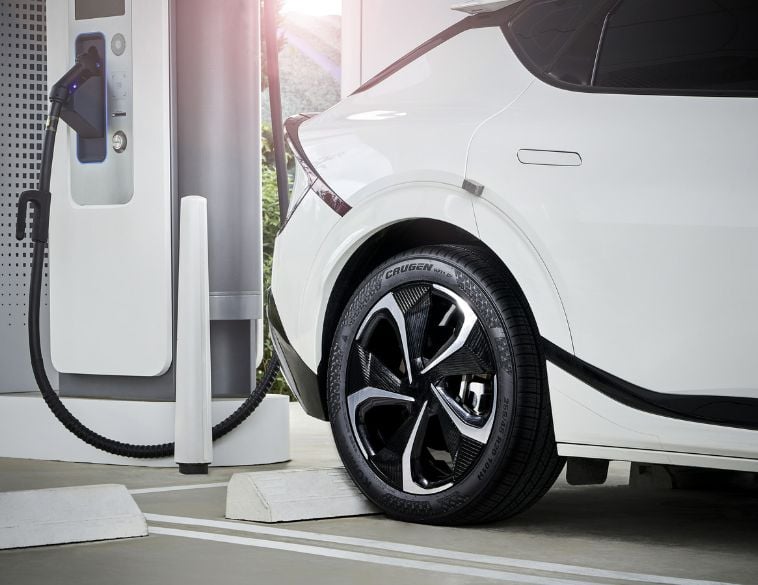Canadian drivers have glaring gaps in their knowledge about how to maintain proper tire inflation.
While nine-in-ten drivers surveyed believe motorists have a responsibility to make their vehicles as fuel efficient as possible, 96 percent say proper tire inflation is important.
These stats are according to a new tire maintenance attitudinal survey conducted by Leger on behalf of the Tire and Rubber Association of Canada.
The survey also finds that:
- Only 30 percent measure their tires’ inflation pressures monthly, a practice essential to fuel economy, road safety and protecting the environment
- 65 percent are unaware inflation pressures should only be measured when tires are cold. (A vehicle should be stationary for at least three hours or not have been driven more than two kilometres prior to checking tire inflation. Measuring pressures when tires are warm gives an inaccurate reading.)
- 37 percent refer to the air pressure stamped on the tire’s sidewall when identifying the correct pressure for their tires. (The imprinted sidewall pressure is the maximum pressure a tire can contain under maximum load, not the recommended inflation level. Prolonged driving at this inflation pressure may result in uneven tread wear and reduced traction, particularly on wet surfaces.)
- 22 percent rely on visual inspections to determine if their tires are inflated properly. (A tire can be underinflated by 20 percent or more and look normal.)
Among motorists who say proper tire inflation is important to them, top reasons cited include: vehicle safety (84 percent) followed by longer tire life (74 percent), fuel economy (73 percent) and improved vehicle handling (71 percent).
Other positive news emerging from the study is that 61 percent of drivers use a personal air pressure gauge when measuring tire pressures. As well, 86 percent report they rotated their tires in the past year and 66 percent had their vehicle’s tire alignment checked in the past 12 months.
“Canadian drivers understand the benefits of proper tire inflation and that’s great news,” says Glenn Maidment, President of the Tire and Rubber Association of Canada (TRAC), which represents tire makers. “However, the survey also emphasizes the urgent requirement for broader driver knowledge and education on tire inflation facts and procedures. The need is particularly acute among younger drivers who are significantly less likely to know inflation pressures should be measured monthly and when tires are cold. Learning a few simple facts and procedures advances safety, maximizes fuel efficiency and protects the environment.”
Fuel economy, environmental benefits
Measuring tire pressures monthly can result in cost savings. Motorists can improve their gas mileage by 0.6 percent on average – up to three percent in some cases – by keeping tires inflated to the proper pressure. Underinflated tires can lower gas mileage by about 0.2 percent for every one psi drop in the average pressure of all tires.
The environmental benefits of proper tire inflation are also significant. Drivers operating their vehicles on underinflated tires are expected to waste more than 500 million litres of fuel in 2018. This is enough fuel to drive 275,000 vehicles for a full year. This wasted fuel will release an additional 1.2 million tonnes of carbon dioxide into the atmosphere.
Low Rolling Resistance Tires
A recent TRAC survey also found 81 percent of Canadian drivers are unfamiliar with low rolling resistance (LRR) tires. These tires are designed with specialized tread patterns that keep vehicles moving efficiently, advanced rubber technologies and materials that minimize internal movements inside the rubber itself and materials that lower weight, increase rigidity and improve aerodynamics. The result is a range of two to four percent in improved fuel economy. For motorists who drive approximately 25,000 km per year, this translates to between $50 to $100 in fuel savings per year, so the average motorist can expect to save hundreds of dollars over the lifetime of these tires.
To help motorists improve their fuel-saving know-how, TRAC is providing an informative ‘Get Fuel Fit’ Guide – a free, online resource offering advice on tire selection, maintenance and driving habits that improve fuel economy and protect the environment.
May 14 to 21, 2018, is National Be Tire Smart Week, during which the tire industry will be reminding motorists about the fuel efficiency, safety and environmental benefits of proper tire inflation and maintenance.
Canadians can also learn more by visiting betiresmart.ca.



